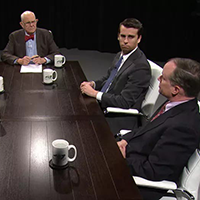How can you cope with the affordability crisis?
Published 4:04 p.m. yesterday
There’s a term that we’re hearing more frequently today – the “affordability crisis.” It implies that a significant number of households today are finding it difficult to afford the essentials of living, such as food, shelter, health care, and child care for families with young children.
Justification for an affordability crisis existing today comes from several sources. Surveys show over half – 52% - of households indicate they don’t have enough income to afford living essentials, meaning corners must be cut. Supporting that survey is another finding that almost two-thirds of households say their work earnings are not rising as much as prices.
Actual data confirm what households are feeling. Average weekly earnings, after adjusting for price inflation, have fallen 3.5% since 2020. Translated, this means for the average worker that prices have risen 3.5% more than weekly earnings since 2020. This means a lower standard of living.
So, what can be done? How can people cope with the affordability crisis? One obvious solution is to increase earnings, either by taking a better-paying job, adding hours to your current job, or by taking a secondary job. Adding hours to a current job or with a secondary job is certainly not without cost. It will mean more hours away from spouses, partners, and children, with the loss of benefits from family interactions. Economists call this an “opportunity cost” to taking on more work. In this context, the benefits of working and earning more must be balanced against the “costs” of less family time and interactions.
Another coping plan is to reduce spending. There are many ways to do this. Eating at restaurants or ordering home-delivered food are more expensive than preparing meals yourself at home. Hence, eating at home from meals you prepare can save serious money. Looking at all of your other spending will likely reveal other potential savings. Reducing travel, shopping, and entertainment are obvious cut-backs. Also, with most households now using multiple streaming platforms to access programming on their TVs, eliminating some of those platforms can yield significant dollar savings.
Smart shopping comes in handy when money is tight. By smart chopping I mean comparing prices and making shifts in your purchases. If a particular product you like has become too expensive, look for cheaper substitutes you can buy. For example, when beef prices are high, consider protein alternatives like pork, turkey, ham, and fish. Also, when sales occur for a favorite product, buy in volume as long as you have the storage room.
Also consider using the dreaded “b” word – budgeting. Although tedious and time-consuming, there’s no substitute for tightening your finances than to develop and continually update your budget. A budget simply shows you the origin of your income and how that income is sued. A budget allows you to easily see where you can make changes in your spending in order to cope with financial challenges. Fortunately, today there are apps and computer programs that can make budgeting easier.
There are special insights about coping with high shelter prices, both for renting and owning. Of course, the price of shelter depends on several obvious factors, such as the size of the house or apartment, the number of rooms and bathrooms, storage, and sometimes views. But equally – if not more – important is the location of the dwelling. Homes and apartments closer to locations people want to access, like shopping, restaurants, entertainment, and offices and workplaces, will cost more, sometimes a lot more.
Therefore, when your finances are tight, the recommendation is to consider shelter that is away from popular locations. Oftentimes this means in outlying suburbs, small towns, or rural areas. Yes, your job commute may be longer, but the extra gas costs will likely be more than covered by lower mortgage payments or rents.
There’s an extra recommendation for first-time homebuyers. Many are stifled today by home prices and mortgage interest rates. My recommendation is to buy a home you can afford, which often means a smaller home with fewer amenities than you want. That’s OK, because you can always sell the home later. Buying a less-than-desirable home gets your foot into the housing market. Because most homes appreciate in value over time, having a “starter home” allows you to work your way up over time to your “dream home.”
Can the federal government do anything to end the affordability crisis? There are two parts of the federal government to watch. One is the Federal Reserve (the “Fed”). The Fed has influence – not control – over interest rates, so it is especially watched for those looking to buy a home. The Fed has recently inched interest rates lower, and it is thought this policy could continue. If correct, homebuying should become slightly more affordable.
The other part of the federal government to watch includes the President and Congress working with the federal budget and legislation. Economists argue that the best way to moderate price increases – or even to lower prices – is to encourage more supply. So, if beef is too expensive, we need more beef production. If vegetables are too expensive, we need more vegetables. Anything that expands production will help consumers with prices.
Tariffs are a relatively new element to pricing. Economists argue tariffs have added to some prices because US companies importing foreign products pay the tariffs. Interesting, the Administration has lowered some tariffs on foreign imported food products.
Ultimately the affordability crisis should ease. But until that happens you will have to decide how to make your life more affordable.
Walden is a William Neal Reynolds Distinguished Professor Emeritus at North Carolina State University.







